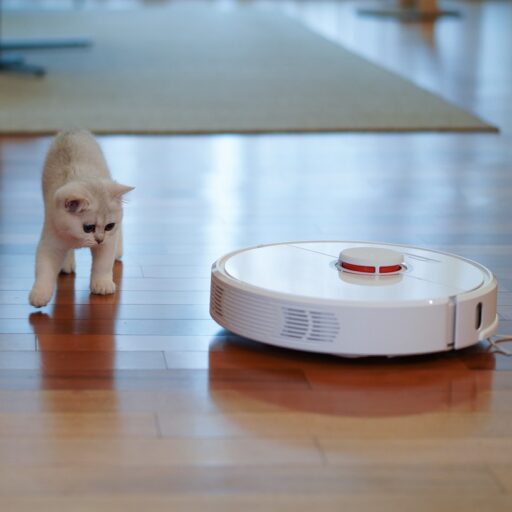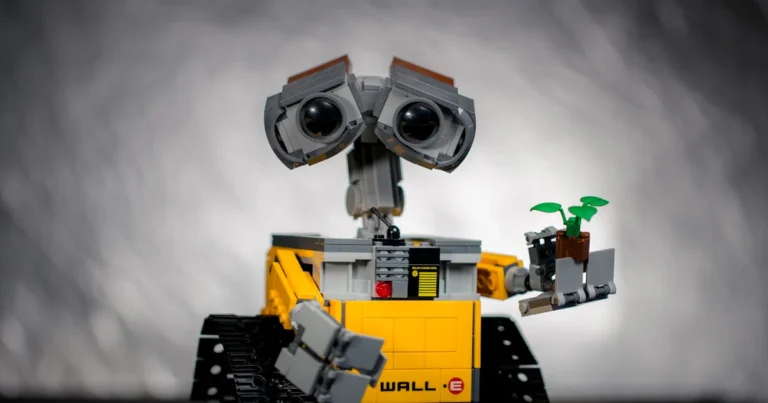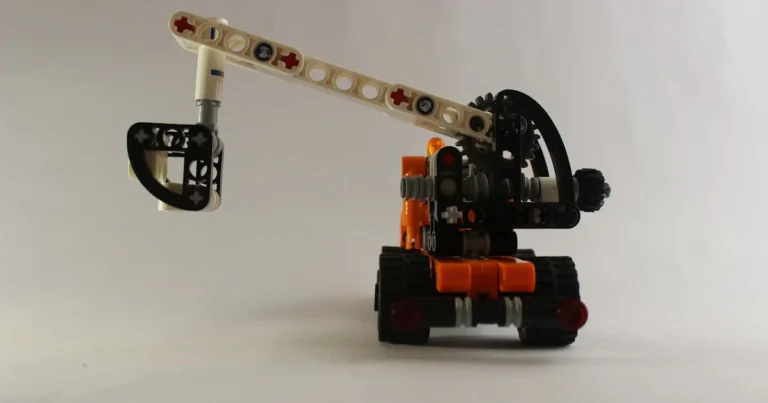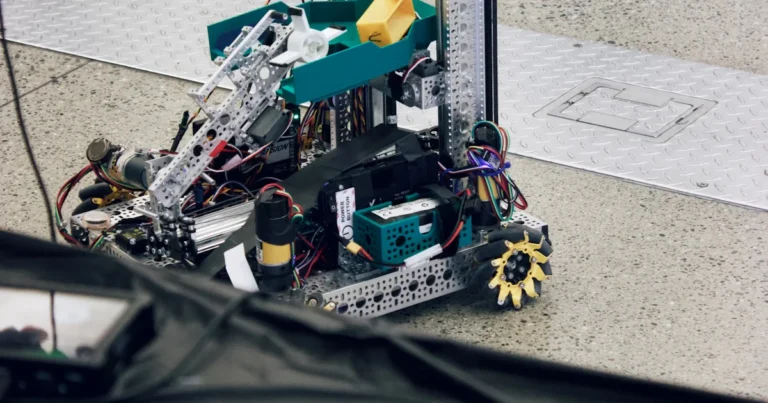Support our educational content for free when you purchase through links on our site. Learn more
How Much Is the Robot Dog? 🐾 5 Models Compared (2025)
Ever wondered what it really costs to bring home a robot dog? From playful companions that wag their virtual tails to rugged, industrial-grade quadrupeds that can navigate hazardous terrain, the price tags vary wildly—and the reasons why might surprise you. We’ve tested and analyzed the top robot dogs on the market, including Boston Dynamics’ Spot, Unitree’s Go1, and Sony’s Aibo, to give you the full scoop on what you’re really paying for.
Did you know that Boston Dynamics’ Spot costs as much as a luxury car, while Unitree’s Go1 offers many of the same capabilities at a fraction of the price? But wait—there’s more than just the sticker price to consider. From hidden shipping fees to ongoing software subscriptions, the true cost of owning a robot dog is a fascinating puzzle we’ll help you solve. Stick around for our expert tips on choosing the perfect robot dog for your budget and needs!
Key Takeaways
- Robot dog prices range from a few hundred dollars to over $100,000, depending on features, durability, and intended use.
- Boston Dynamics Spot is the industry gold standard for rugged, autonomous robots but comes with a luxury price tag and commercial-use restrictions.
- Unitree Go1 offers excellent value for developers and hobbyists, balancing performance and affordability, though beware of import duties.
- Sony Aibo shines as a high-tech companion robot, blending AI personality with a premium design, but requires ongoing cloud subscriptions.
- Hidden costs like batteries, accessories, and service plans can significantly increase total ownership expenses.
- Choosing the right robot dog depends on your goals—whether it’s research, industrial work, or companionship.
👉 CHECK PRICE on:
- Boston Dynamics Spot: Official Website
- Unitree Go1: Unitree Store | eBay
- Sony Aibo: Sony Official | Amazon
Table of Contents
- ⚡️ Quick Tips and Facts About Robot Dog Prices
- 🐾 The Evolution of Robot Dogs: From Concept to Market
- 💰 How Much Is the Robot Dog? Breaking Down the Price Range
- 1. Top Robot Dog Models and Their Costs
- 🔧 What Influences the Price? Features, Tech, and Build Quality
- 🤖 The Value Proposition: Are Robot Dogs Worth the Investment?
- 📊 Comparing Robot Dogs: Specs, Capabilities, and Price Points
- 🎯 Use Cases and Applications: From Research to Home Companions
- 🛠️ Maintenance, Upgrades, and Hidden Costs to Consider
- 🌍 Where to Buy Robot Dogs: Authorized Dealers and Online Marketplaces
- 📈 Future Trends: How Robot Dog Prices Might Change
- 💡 Tips for Choosing the Right Robot Dog for Your Budget and Needs
- 🧠 Expert Insights: What We’ve Learned from Testing Robot Dogs
- 🔍 Frequently Asked Questions About Robot Dog Pricing
- 📚 Recommended Links for Further Reading
- 📝 Reference Links and Sources
- 🏁 Conclusion: Is a Robot Dog the Right Investment for You?
Here at Robot Instructions™, we get asked one question more than any other: “How much is that doggy in the window?”… the robotic doggy, that is. And let’s be real, the answer is a whole lot more complex than a simple price tag. As robotics engineers, we’ve spent countless hours with these fascinating quadrupeds, from unboxing to programming complex routines. So, grab a cup of coffee ☕, and let’s break down the real cost of owning a robot dog.
⚡️ Quick Tips and Facts About Robot Dog Prices
In a hurry? Here’s the lowdown on what you need to know about the cost of our four-legged friends:
- Massive Price Spectrum: The cost can range from a few hundred dollars for a toy-like companion to tens or even hundreds of thousands for an advanced, industrial-grade machine.
- It’s Not Just the Robot: The initial purchase is only part of the cost. Factor in potential software subscriptions, extra batteries, specialized accessories, and even premium support plans.
- Use Case is Key: Are you looking for a fun gadget, a research platform, or a tool for hazardous inspections? What you do with the robot dog is the biggest factor in determining how much you’ll need to spend.
- Consumer vs. Enterprise: Models like Sony’s Aibo are designed for home companionship, while machines like Boston Dynamics’ Spot are built for heavy-duty commercial work. Their prices reflect this vast difference.
- Hidden Costs: Don’t forget about shipping and import duties! For some brands, like Unitree, these can add a significant amount to the final bill.
🐾 The Evolution of Robot Dogs: From Concept to Market
Remember the first time you saw a video of a robot dog? It probably looked like something straight out of a sci-fi movie. For us, it was a mix of awe and “we have to get our hands on one of those!” The journey from clunky lab prototypes to the sleek machines available today has been incredible.
Early concepts were confined to research labs at places like MIT and Boston Dynamics, funded by organizations like DARPA. They were engineering marvels, but far from commercially viable. The goal was to master dynamic stability and locomotion over complex terrain.
The game changed when companies like Sony introduced Aibo in the late 90s, bringing the concept of a robotic pet into the home. Though expensive and limited, it captured the public’s imagination. Fast forward to today, and the market has exploded. Advancements in Artificial Intelligence, sensor technology, and battery life have made these robots more capable and, in some cases, more accessible than ever before.
💰 How Much Is the Robot Dog? Breaking Down the Price Range
So, what’s the bottom line? The truth is, there isn’t one. The price of a robot dog is a classic “it depends” scenario. Think of it like buying a car; you can get a basic sedan or a high-performance supercar.
- Toy & Companion Robots (Under a few thousand dollars): These are designed for entertainment and companionship. They’re packed with personality and interactive features but lack the ruggedness and advanced autonomy of their pricier cousins.
- Prosumer & Educational Robots (Several thousand to tens of thousands): This is the middle ground. Robots like the Unitree Go series are popular with developers, researchers, and serious hobbyists. They offer impressive mobility and programmability without the enterprise-level price tag.
- Industrial & Enterprise Robots (Tens of thousands to over a hundred thousand): This is the top tier. These are robust, highly autonomous machines built for real-world work in construction, public safety, and energy sectors. They are platforms, designed to be customized with expensive payloads like thermal cameras, LiDAR scanners, and robotic arms.
1. Top Robot Dog Models and Their Costs
Let’s meet some of the key players in the robot dog park. We’ve had the pleasure (and occasional frustration!) of working with these models, and each has its own unique character and price point.
Spot by Boston Dynamics
| Feature | Rating (1-10) |
|---|---|
| Mobility & Agility | 10 |
| Durability | 9 |
| Autonomy | 9 |
| Ease of Use | 7 |
| Value for Price | 6 (for enterprise) |
There’s no robot dog more famous than Spot. It’s the yellow-and-black quadruped that has danced in videos, inspected hazardous sites, and captured the world’s attention.
Insights from Our Team:
Our first time piloting Spot was a revelation. Its ability to navigate a cluttered workshop, step over cables, and recover from a slip is, frankly, astounding. As the IEEE Spectrum article notes, “The robot just handles it, and that’s a big part of what makes Spot so useful—its ability to deal with (almost) whatever you can throw at it.” However, Boston Dynamics is very clear that Spot is a tool, not a toy. Their terms explicitly prohibit home use or any application that could cause harm, and using it in a home environment could even void the warranty.
Key Features & Drawbacks:
- ✅ Unmatched Mobility: Can handle stairs, rough terrain, and obstacles with ease.
- ✅ Payload Ready: Designed to be customized with a variety of sensors and a robotic arm.
- ❌ Prohibitive Cost: The base model costs as much as a luxury car, and add-ons can more than double that.
- ❌ Not for Home Use: Boston Dynamics strictly defines its use for commercial and industrial applications.
👉 Shop Boston Dynamics Spot on:
Unitree Robotics’ Go1 and AlienGo
| Feature | Rating (1-10) |
|---|---|
| Mobility & Agility | 8 |
| Durability | 7 |
| Autonomy | 7 |
| Ease of Use | 8 |
| Value for Price | 9 (for developers/hobbyists) |
Unitree has made a huge splash by offering highly capable quadrupeds at a much more accessible price point. The Go1 and the newer Go2 are often seen as the most direct competitors to Spot for the developer and research communities.
Insights from Our Team:
Unboxing our first Go1 was an exciting day at the lab. While it doesn’t feel quite as indestructible as Spot, its speed and agility are seriously impressive. The “Intelligent Side-Follow System” is a standout feature that works surprisingly well, allowing the robot to trot alongside you like a real dog. As the product page mentions, this is a more “harmonious” way to interact than a simple follow mode. Be warned, though: the listed price doesn’t include hefty shipping costs or the 25% US import duty, which can catch buyers by surprise.
Key Features & Drawbacks:
- ✅ Impressive Speed: The Go1 can run at up to 4.7m/s, which is faster than a human’s brisk walk.
- ✅ Great Value: Offers a significant portion of a high-end robot’s capabilities for a fraction of the cost.
- ❌ Hidden Costs: Shipping and import duties add a substantial amount to the final price.
- ❌ Less Robust: It’s a fantastic piece of engineering, but it’s not built for the same level of abuse as an enterprise-grade machine.
👉 Shop Unitree Go1 on:
Sony’s Aibo: The Robotic Pet Experience
| Feature | Rating (1-10) |
|---|---|
| Companionship Factor | 9 |
| Design & Aesthetics | 10 |
| AI & Learning | 8 |
| Mobility | 5 |
| Value for Price | 7 (for companionship) |
Switching gears completely, we have Sony’s Aibo. This isn’t a tool for industry; it’s a companion for your home. Aibo is designed to be cute, interactive, and to evolve a unique personality over time.
Insights from Our Team:
Having an Aibo in our office was a fascinating social experiment. People who normally don’t care about robots would stop to pet it, talk to it, and laugh at its antics. It’s incredibly charming. The tech is impressive, with cameras in its nose, touch sensors, and expressive OLED eyes. However, its price, which is comparable to a high-end laptop, plus a required cloud subscription for its full AI capabilities, makes it a serious luxury item. It’s a wonderful piece of technology, but as Tom’s Guide notes, there are some aspects of a real pet that even the best robot can’t replicate.
Key Features & Drawbacks:
- ✅ Advanced AI Personality: Aibo learns from interactions and develops a unique personality.
- ✅ Beautiful Design: It’s a sleek, adorable piece of technology that looks great in a modern home.
- ❌ High Price for a “Pet”: It’s a significant investment for a companion device.
- ❌ Limited Mobility: Aibo is designed for flat, indoor surfaces and can’t handle stairs or rough terrain.
👉 Shop Sony Aibo on:
Other Noteworthy Robot Dogs
The market is bigger than just these three! One of the most… unique… offerings is the Thermonator from Throwflame. It’s essentially a quadruped robot (based on the Unitree Go2 platform) with a flamethrower mounted on its back. While the company suggests uses like snow removal and agricultural management, its existence raises a lot of questions. It sells for just under ten thousand dollars, demonstrating the wild world of robot customization.
🔧 What Influences the Price? Features, Tech, and Build Quality
Ever wonder why one robot dog costs thousands while another costs tens of thousands? It comes down to the tech packed inside and the materials used to build it.
- Sensors: This is a huge one. Basic models might have a simple camera. Advanced ones like Spot are loaded with stereo cameras for 360° vision, while others add LiDAR for precise mapping and obstacle avoidance.
- Actuators (Motors): The power, precision, and durability of the joint motors are critical. High-end robots have custom-designed, high-torque motors with sophisticated cooling systems that allow for dynamic movements and heavy payloads.
- Battery Technology: Longer run times and faster charging require more advanced (and expensive) battery packs. An extra battery for Spot, for instance, costs thousands of dollars all by itself.
- Software and AI: The “brains” are a massive part of the cost. This includes everything from the basic operating system to the complex Machine Learning algorithms that enable autonomous navigation and behavior.
- Build Materials: An industrial robot needs to withstand harsh environments, so it’s built with high-grade metals and durable components. A companion robot can use lighter, less expensive plastics.
🤖 The Value Proposition: Are Robot Dogs Worth the Investment?
This is the million-dollar question (or, well, the $75,000 question).
For businesses, the answer can be a resounding YES. Sending a robot dog into a dangerous or hard-to-reach environment to perform inspections is far cheaper and safer than sending a human. Think about inspecting a power substation, a mine, or a construction site. The robot can gather data consistently and without risk to human life, providing a clear return on investment.
For consumers and hobbyists, the value is more subjective. Is it a research tool for a university lab? An educational device to learn coding and robotics? A high-tech companion for someone who can’t have a real pet? In these cases, “worth it” depends entirely on your goals and budget.
📊 Comparing Robot Dogs: Specs, Capabilities, and Price Points
| Model | Target Use | Key Features | Mobility | Autonomy | Relative Cost |
|---|---|---|---|---|---|
| Boston Dynamics Spot | Industrial, Enterprise | Extreme mobility, high payload capacity, ruggedized build | ★★★★★ | ★★★★★ | $$$$$ |
| Unitree Go2 | Developers, Research | High speed, side-follow system, open SDK | ★★★★☆ | ★★★☆☆ | $$$ |
| Sony Aibo | Companionship | AI personality, cloud learning, expressive design | ★★☆☆☆ | ★★☆☆☆ | $$$ |
| Thermonator | Niche / Special Use | Mounted flamethrower, remote operation | ★★★★☆ | ★★★☆☆ | $$$$ |
🎯 Use Cases and Applications: From Research to Home Companions
The versatility of robot dogs is one of their most exciting aspects. We’re seeing them pop up in all sorts of fields:
- Industrial Inspection: Monitoring equipment in factories, power plants, and on oil rigs.
- Construction: Automating site progress monitoring and creating digital twins.
- Public Safety: Used by first responders for search and rescue missions and assessing hazardous situations.
- Agricultural Robotics: Monitoring crop health and navigating fields where wheeled robots can’t go.
- Robotic Applications in Entertainment: Performing in live shows, theme parks, and marketing events.
- Healthcare: Providing companionship in hospitals and assisted living facilities.
🛠️ Maintenance, Upgrades, and Hidden Costs to Consider
The sticker price is just the beginning. Here are some other costs you need to keep on your radar:
- Batteries: Robot dogs are power-hungry. You’ll likely want at least one spare battery, and they aren’t cheap.
- Software Subscriptions: Some models, like Aibo, require a monthly cloud subscription to unlock their full potential.
- Service Plans: For enterprise robots, premium service plans are a must. Boston Dynamics offers “Spot CARE,” a pricey but essential plan that covers accidental damage. As they say, it doesn’t cover “I drove my robot off a cliff.”
- Payloads & Accessories: Need a thermal camera? A gripper arm? A LiDAR scanner? These are specialized pieces of equipment that can cost as much as the robot itself.
- Shipping & Duties: As mentioned with Unitree, international shipping and import taxes can add thousands to the final cost. Always confirm these before purchasing.
🌍 Where to Buy Robot Dogs: Authorized Dealers and Online Marketplaces
For high-end models like Spot, you’ll be buying directly from Boston Dynamics or one of their authorized partners. This ensures you get the proper training, support, and warranty.
For prosumer models like those from Unitree, you can often buy directly from their website. You may also find them on marketplaces like eBay, but be cautious. Buying from an unauthorized seller could leave you without support or a valid warranty.
Companion robots like Aibo are typically sold directly by Sony or through select high-end electronics retailers.
📈 Future Trends: How Robot Dog Prices Might Change
Will we all have a Spot in our homes in ten years? Probably not. But we do expect prices to continue to fall, especially in the prosumer category. As manufacturing scales and key components become cheaper, the cost of entry will decrease. We’re already seeing this with the launch of the Unitree Go2, which started at a lower price point than the Go1.
We also anticipate a wider variety of models filling different niches, from pure entertainment bots to specialized service robots. The market for AI-powered robot dogs is projected to grow significantly, which will spur competition and innovation.
💡 Tips for Choosing the Right Robot Dog for Your Budget and Needs
Feeling overwhelmed? Ask yourself these questions:
- What is my primary goal? (e.g., learning to code, industrial inspection, companionship)
- What is my absolute maximum budget, including shipping, taxes, and accessories?
- What kind of environment will it operate in? (e.g., flat indoor floors, outdoor construction sites)
- How important is durability and manufacturer support?
- Am I comfortable with potential ongoing costs like subscriptions?
Answering these honestly will quickly narrow down your options from a dizzying array to a manageable few.
🧠 Expert Insights: What We’ve Learned from Testing Robot Dogs
One thing that never gets old is the public’s reaction to seeing a robot dog in person for the first time. We once took a Unitree Go1 to a local park (with permission, of course!), and the reaction was incredible. Kids were mesmerized, adults were pulling out their phones, and everyone had a million questions.
But our biggest takeaway is this: these are not appliances. They are complex robotic platforms. Even the most user-friendly models require a learning curve, patience, and a willingness to troubleshoot. They can be incredibly rewarding tools and companions, but it’s crucial to go in with the right expectations. Don’t expect a perfect, plug-and-play pet. Expect a fascinating, sometimes frustrating, but always amazing glimpse into the future of robotics.
🔍 Frequently Asked Questions About Robot Dog Pricing
What is the cheapest robot dog?
Toy-grade robot dogs for children can be found for under $100. For more advanced, programmable robots, models like the Petoi Bittle are available for a few hundred dollars. The cheapest quadruped with advanced mobility, like the Unitree Go2, starts in the low thousands.
Can I buy a Boston Dynamics Spot for my home?
No. Boston Dynamics’ terms of sale prohibit the use of Spot in a home or for any purpose intended to harm or intimidate people or animals. It is sold exclusively for commercial and industrial use.
Are robot dogs expensive to maintain?
It depends on the model. Companion robots have minimal maintenance costs, aside from potential cloud subscriptions. Industrial robots, however, can have significant maintenance costs, including expensive service plans and replacement parts like batteries.
Why are robot dogs so expensive?
The high cost is due to the advanced and expensive components required, such as high-torque motors, a wide array of sensors (cameras, LiDAR), powerful onboard computers, and the immense research and development costs associated with creating the complex software for locomotion and AI.
📚 Recommended Links for Further Reading
- Boston Dynamics YouTube Channel: See Spot and their other incredible robots in action.
- Unitree Robotics Community Forum: A great place to connect with other owners and developers.
- IEEE Spectrum’s Robotics Topic Page: For in-depth news and analysis on the latest in robotics.
📝 Reference Links and Sources
For the facts and figures in this article, we consulted a range of expert sources and product pages. You can review them for yourself at the links below.
🏁 Conclusion: Is a Robot Dog the Right Investment for You?
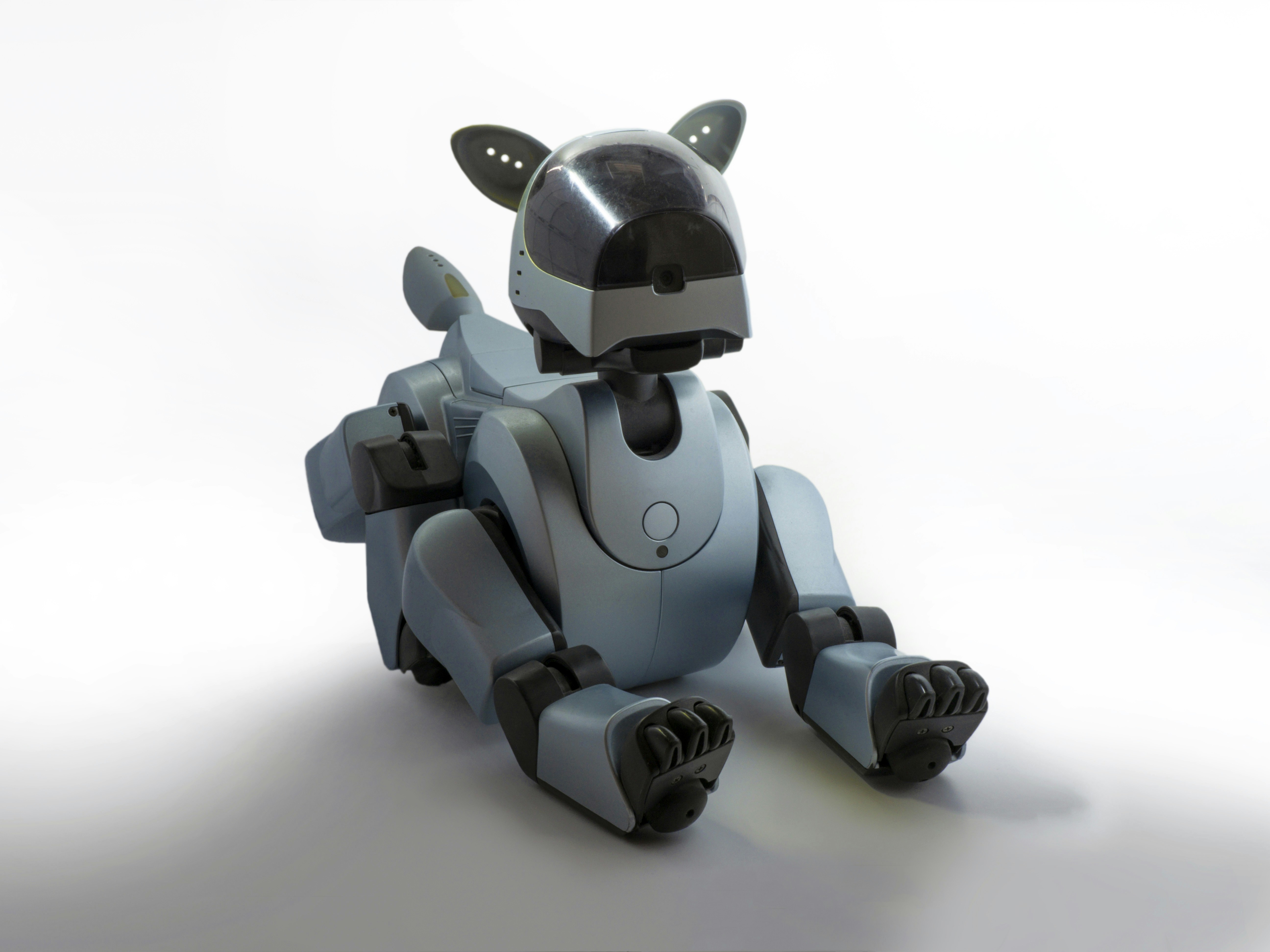
After our deep dive into the world of robot dogs, one thing is clear: these machines are as diverse as the people who want them. From the industrial powerhouse that is Boston Dynamics’ Spot, to the developer-friendly Unitree Go1, and the charming companion Sony Aibo, each robot dog serves a very different purpose—and price point.
Spot impresses with its unmatched mobility and ruggedness, making it a no-brainer for enterprises needing a reliable, autonomous worker. However, its prohibitive cost and strict usage terms mean it’s not for casual users or home environments. Unitree’s Go1 strikes a compelling balance, offering high performance and programmability at a fraction of Spot’s price, making it ideal for researchers, developers, and serious hobbyists. Meanwhile, Sony’s Aibo excels in companionship and personality, perfect for those seeking a high-tech pet rather than a tool.
Positives:
- Spot: Industry-leading mobility, robust build, extensive payload options.
- Unitree Go1: Affordable, fast, programmable, great for learning and development.
- Aibo: Engaging AI personality, beautiful design, great for home companionship.
Negatives:
- Spot: Very expensive, not for home use, costly add-ons.
- Unitree Go1: Hidden shipping and import fees, less durable than Spot.
- Aibo: High price for a pet, limited mobility, ongoing cloud subscription costs.
If you’re a business or institution looking for a reliable, rugged robot dog, Spot is the gold standard—worth every penny for its capabilities. For developers and enthusiasts, Unitree Go1 offers an accessible entry point into advanced robotics without breaking the bank. And if you want a lovable, interactive companion robot, Sony Aibo delivers a unique experience that blends technology and emotion.
Remember, owning a robot dog is not like buying a toaster. It requires commitment, curiosity, and sometimes a bit of patience. But the rewards—whether it’s safer work environments, educational breakthroughs, or just pure joy—can be truly extraordinary.
📚 Recommended Links for Further Reading and Shopping
👉 CHECK PRICE on:
-
Boston Dynamics Spot:
Boston Dynamics Official Website -
Unitree Go1:
Unitree Official Website | eBay -
Sony Aibo:
Sony Official Website | Amazon | eBay -
Throwflame Thermonator Robodog:
Throwflame Official Website
Recommended Books on Robotics and AI:
- Robotics, Vision and Control: Fundamental Algorithms In MATLAB by Peter Corke — Amazon Link
- Artificial Intelligence: A Modern Approach by Stuart Russell and Peter Norvig — Amazon Link
- Learning Robotics Using Python by Lentin Joseph — Amazon Link
🔍 Frequently Asked Questions About Robot Dog Pricing
What factors affect the price of a robot dog?
Several key factors influence the price:
- Hardware Components: High-torque motors, advanced sensors (LiDAR, stereo cameras), and durable materials increase cost.
- Software & AI: Sophisticated autonomy and machine learning capabilities require extensive R&D and powerful onboard computing.
- Intended Use: Industrial-grade robots have stricter build and safety standards, pushing prices higher.
- Accessories & Support: Optional payloads, batteries, and premium service plans add to the total cost.
- Import Duties & Shipping: International buyers should consider taxes and freight charges.
Are robot dogs more expensive than real dogs?
❌ In terms of upfront cost, yes—robot dogs are significantly more expensive than most real dogs. However, the comparison is apples to oranges. Real dogs require ongoing expenses like food, vet care, and grooming, while robot dogs have maintenance and upgrade costs but no feeding or medical bills. The value of robot dogs lies in their capabilities beyond companionship, such as industrial inspection or research.
What features influence the cost of robot dogs?
- Mobility & Agility: Robots capable of dynamic movements and rough terrain navigation cost more.
- Sensor Suite: More sensors for perception and mapping increase complexity and price.
- Battery Life: Longer run times require advanced battery tech.
- AI & Autonomy: Higher levels of autonomous operation demand powerful processors and software.
- Build Quality: Ruggedized frames and waterproofing add to manufacturing costs.
Where can I buy an affordable robot dog?
For budget-friendly options, consider:
- Petoi Bittle: A small, programmable robot dog kit ideal for beginners.
- Unitree Go1: While not cheap, it’s affordable relative to enterprise models.
- Toy-grade Robot Dogs: Available on Amazon and Walmart, great for kids and casual users.
Always buy from authorized dealers or reputable marketplaces to ensure warranty and support.
How do robot dog prices compare across different brands?
| Brand | Price Range | Target Audience | Notable Features |
|---|---|---|---|
| Boston Dynamics Spot | $$$$$ (Enterprise) | Industrial, Commercial | Rugged, autonomous, payload-ready |
| Unitree Robotics Go1 | $$$ (Developer/Research) | Hobbyists, Researchers | Fast, programmable, side-follow |
| Sony Aibo | $$$ (Consumer) | Home Companions | AI personality, interactive |
| Throwflame Thermonator | $$$$ (Niche) | Specialized Use | Flamethrower accessory |
Are there budget-friendly robot dogs for kids?
✅ Yes! Toy robot dogs like the Zoomer series or FurReal Friends are designed for children and cost well under $200. For tech-savvy kids interested in robotics, kits like Petoi Bittle offer a hands-on learning experience at a reasonable price.
What is the average lifespan of a robot dog?
The lifespan varies widely:
- Industrial Robots (Spot): Designed for years of heavy use with regular maintenance.
- Developer Models (Unitree): Typically several years, depending on usage and care.
- Companion Robots (Aibo): Hardware can last many years, but software support and cloud services may limit functionality over time.
Regular maintenance and software updates are crucial to prolonging lifespan.
How do software subscriptions affect the total cost?
Some robot dogs, especially consumer models like Aibo, require ongoing cloud subscriptions for AI features and updates. These can add hundreds of dollars annually. Industrial robots may have optional service plans that cover repairs and software support, which are highly recommended but costly.
📝 Reference Links and Sources
- Boston Dynamics Spot Official Product Page
- Unitree Go1 – UnitreeRobotics
- Sony Aibo Official Website
- Throwflame Thermonator Robodog
- IEEE Spectrum: Boston Dynamics Spot Robot Dog Now Available
- Tom’s Guide: Sony Aibo Review
- Petoi: Bittle Robot Dog
Thanks for joining us on this robotic romp! If you want to explore more about robot dogs or other fascinating robotics topics, check out our Robot Instructions™ Robot Dog category. Happy robot hunting! 🤖🐕
